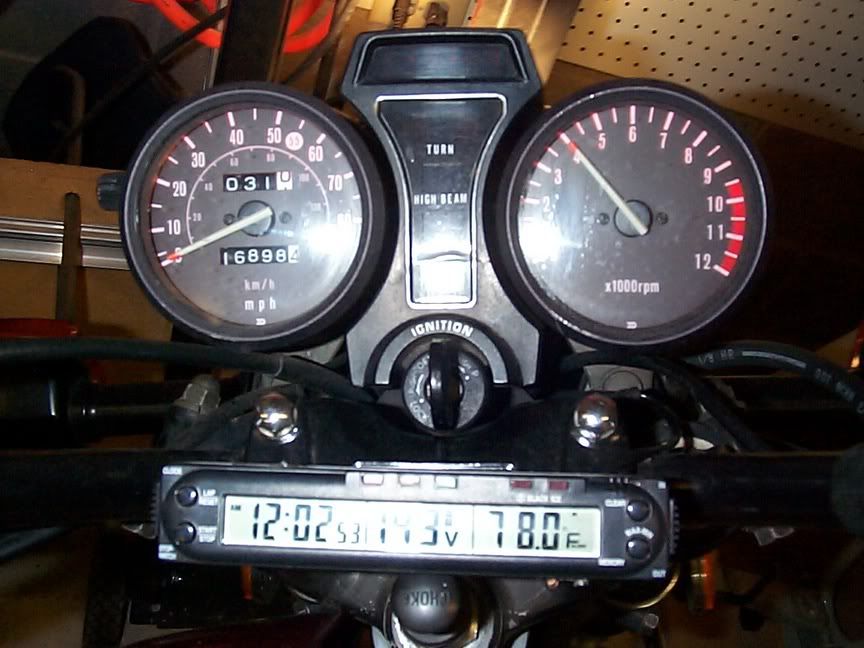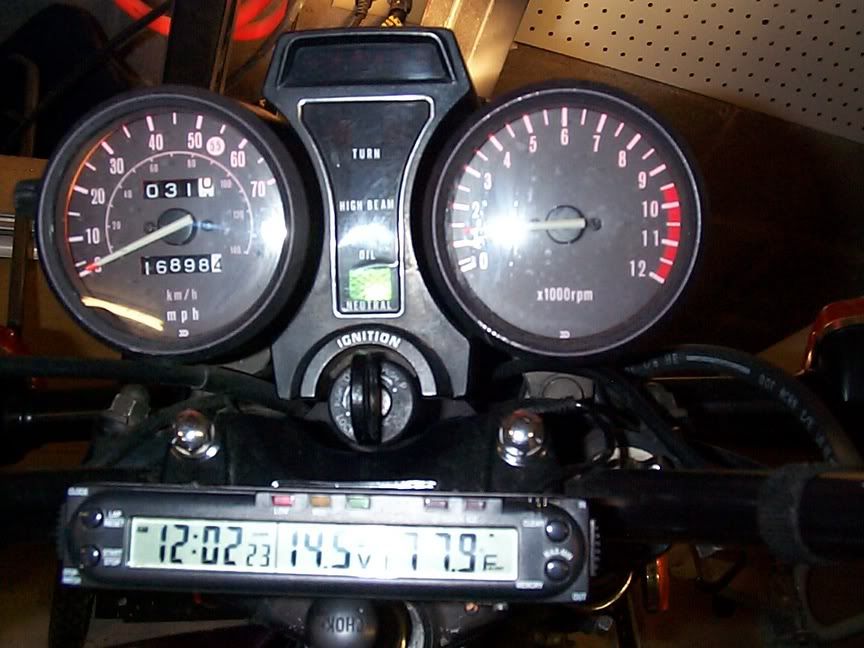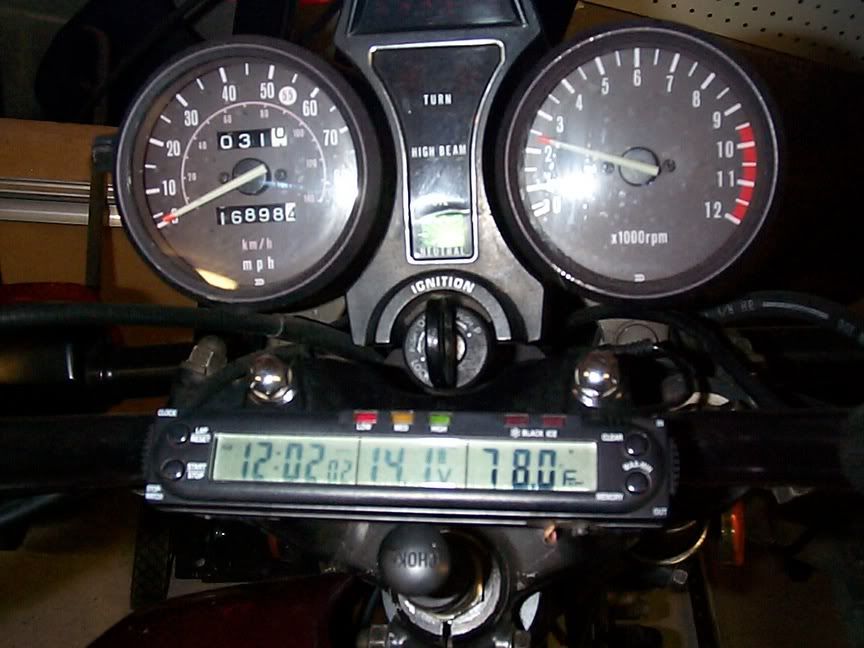I found the GSResources by accident, and boy am I glad I did. A wealth of information and some solace in my problems being thoroughly common. What I found was my bike has a great engine and a not so good electrical system. For cheap bikes, cutting costs anywhere possible will inevitably lead to problems down the road. Yamaha?s of the same vintage apparently used alternators { ie a stator and a field coil controlled by the r/r }whereas Suzuki?s used a generator { a stator and permanent magnets }. I know this because I got a Yamaha r/r while looking for a Honda, and it apparently cannot be made to work

Thanks to Duanage, I have obtained the correct r/r. It?s a Honda, not a Suzuki [ nor a Yamaha}. But he also modified it to make it work all the better and install that much easier! I thought I was going to get just the r/r but I got so much more. Included were additional bullet connectors to replace the old/faulty spade types, and a ready to attach pig-tail for the sensor wire attachment to the orange brake line. He even included two allen bolts for attaching the r/r - the originals were phillips-head and they stripped. Talk about being pleasantly surprised. If you have a r/r problem, after checking the ?stator papers? you may want to inquire if Duanage has a r/r for you. Trust me its very worth it.
At the same time I installed a Big Bike Parts volt meter. I got it from California Sport Touring http://www.casporttouring.com/
 For $25.48 including shipping, it has a clock, stop watch/lap, digital volt meter, led charging status indicator lights, and a thermometer with in/out sensors. The clock was a nice perq because I had been using a watch that was tie-wrapped to the handle bars - don?t laugh, I?ve seen many a bike of this vintage with watches attached. Better still, when the bike is running the unit is back-lit, an improvement over the watch I had been using. The LEDs are a bit redundant considering the digital volt meter, but if the voltage drops below 11.5 volts it beeps loudly to let you know. The in/out thermometer is amusing on a bike, and I surmise from the instructions this item was originally designed for cars. Never the less, it comes with a freeze alert beep, if you want to have it tell you it?s cold out. Now I can keep an eye on the charging state of the bike.
For $25.48 including shipping, it has a clock, stop watch/lap, digital volt meter, led charging status indicator lights, and a thermometer with in/out sensors. The clock was a nice perq because I had been using a watch that was tie-wrapped to the handle bars - don?t laugh, I?ve seen many a bike of this vintage with watches attached. Better still, when the bike is running the unit is back-lit, an improvement over the watch I had been using. The LEDs are a bit redundant considering the digital volt meter, but if the voltage drops below 11.5 volts it beeps loudly to let you know. The in/out thermometer is amusing on a bike, and I surmise from the instructions this item was originally designed for cars. Never the less, it comes with a freeze alert beep, if you want to have it tell you it?s cold out. Now I can keep an eye on the charging state of the bike.Installing the new r/r was easy. Dismay followed as I was getting as much as 15.8 volts on the highway. Tinkering with the bike again disclosed my main harness { the one coming out of the fuse panel } was HOT! Bad connections effectively limits the same current to a smaller area, and that creates resistance that shows up as heat that should not be in wires or connectors. I took the harness halves apart and dunked each half in Tarnex. Then I inserted a small bladed screwdriver in order to squish down the female spade connectors. After I reconnected them and started the bike, no more heat!!!
The moral of the story is that IMHO Suzuki made poor design decisions in their electrical system. Not withstanding, bad connections and corroded wires can lead to increased resistance and heat that will either burn wires, components, r/r?s or all of the above!. This is a much bigger problem! Why this is so much more a problem on bikes rather than cars still avoids a satisfying explanation, but there it is. So the excessively high 15.8 volts has been reduced to 15.1 volts. And that?s with just one bad connector.
In summation: Check all connections for corrosion/ heat. Check status of battery. Read Stator Papers. If replacing the r/r use the Honda r/r and follow the instructions at http://www.thegsresources.com/_forum...169&highlight=
PS
I was planning on using dielectric grease on the connectors, but have come across another beast known as Stabillant 22. It?s sold at NAPA stores part # ECHCE-1 for $62 for 10cc!!!!. the reputation of this stuff is incredible, as is the price. Just might be worth it though in order to prevent future problems. Or perhaps the dielectric grease will do?
One thing is for certain, in addition to checking the battery water level, tire pressure, and fork pressure regularly, it seems a part of routine maintenance is to see if there are any hot wires!
My Bike:

.png)



Comment